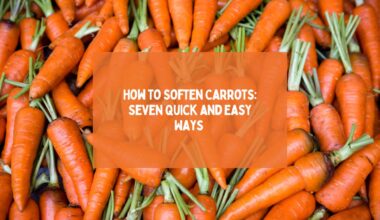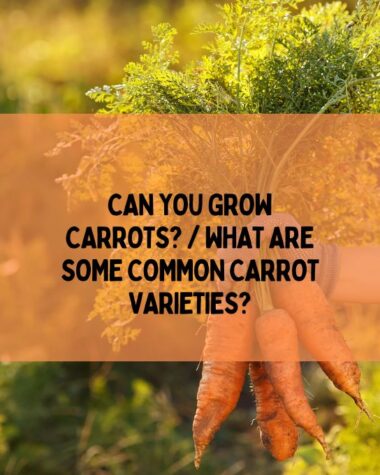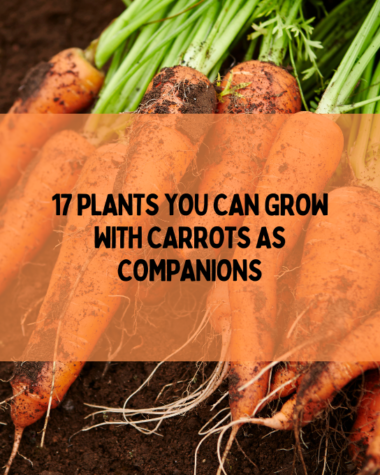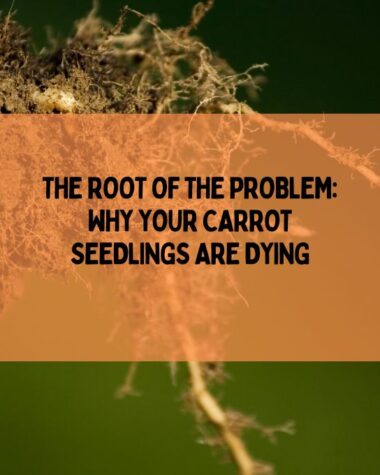Carrots are a delicious and nutritious vegetable that is easy to grow in a home garden. But planting carrots at the wrong time of year can result in poor growth or crop failure. Carrots are typically ready to harvest after 70–80 days.
The best time to plant carrots is in the spring or fall, depending on the local climate. In most regions, planting in the spring is preferred because this climate gives the carrots enough time to mature before the heat of summer.
Other factors, like soil, seeds, adequate care, regular watering, and fertilizing, are essential to ensuring healthy carrot growth.
In this article, I will tell you the right time to plant carrots and the proper steps to take.
Let’s start.
8 Tips for Growing a Successful Carrot Crop

The tips for planting carrots and growing a successful crop are given below.
1. Proper Growing Zone
Knowing your growing zone is necessary for determining the best time to plant carrots. Carrots thrive in cool weather and require well-draining soil with a pH between 6.0 and 6.8. The ideal temperature range for planting carrots is between 55 and 75 degrees F.
Remember that carrot seeds can take up to three weeks to germinate. Once they start to grow, it’s essential to keep the soil moist but not waterlogged.
Related Reading
- The Ultimate Guide To Growing Carrots In Your Garden
- Growing Nantes Carrots: Tips And Techniques For A Bountiful Harvest
- How To Grow Imperator Carrots?
- How to Grow Chantenay Carrots?
2. Choose the Right Season
Choosing the right season to plant carrots is necessary for a successful harvest. Carrots need cool temperatures and can tolerate light frosts, but they do not thrive in extreme heat. The best time to plant carrots is in the early spring or late summer.
In warmer regions, planting carrots in the fall or winter may be possible. It’s important to consider the length of your growing season in your area and plant them when the soil is consistently above freezing.
3. Prepare the Best Soil

Before planting, it’s a good idea to perform a soil test to determine if your soil needs any additional amendments, such as lime or fertilizer. Loosen the soil to a depth of at least 12 inches and remove any rocks or debris.
Adding organic matter, such as compost or well-rotted manure, can improve soil structure and fertility. Crop rotation can help prevent the buildup of soil-borne diseases.
4. Sunlight and Pruning
Sunlight and pruning are important factors to consider when planting carrots. as it helps prevent common problems such as forked or twisted roots. Carrots require at least 6 hours of direct sunlight per day to grow and develop properly.
Pruning is essential for promoting healthy growth and preventing overcrowding. Allow 2–3 inches between plants once the seedlings are a few inches tall.
Avoid disturbing the remaining seedlings while pruning because this may damage the root systems.
5. Provide Adequate Care
Providing adequate care is essential for the health and success of your carrot crop.
Regular weeding and thinning are also important to prevent overcrowding and competition for resources. Fertilizing with a balanced fertilizer can help provide the necessary nutrients for healthy growth.
By providing adequate care throughout the growing season, you can enjoy a bountiful harvest of delicious and healthy carrots.
6. Use Companion Planting
Companion planting is a technique that involves planting different crops together to promote healthy growth and prevent pest and disease issues. When planting carrots, there are several companion plants that can be beneficial.
Plants such as onions and garlic can help repel carrot flies, which can damage the roots. Herbs like dill and parsley can also attract beneficial insects like ladybugs and lacewings, which prey on pests like aphids.
Planting legumes like beans or peas in between carrot rows can help fix nitrogen in the soil, which can benefit the carrot crop.
7. Pest Control System
Carrots are also susceptible to pest and disease issues, so monitor for signs of damage.
Implementing a pest control system is important for protecting your carrot crop from damage and ensuring a bountiful harvest. Some common pests that can affect carrots include carrot rust flies, aphids, and cutworms.
One approach to pest control is to use natural methods, such as introducing beneficial insects or using insecticidal soaps. Another method is to use physical barriers, such as row covers or netting, to prevent pests from accessing the plants.
It’s also important to practice good garden hygiene, such as removing diseased plants and rotating crops, to prevent pests and diseases in the soil.
8. Harvesting at the Right Time

Harvesting at the proper time is also important to ensure the best flavor and texture. Mature carrots can be harvested when the shoulders are 34 to 1 inch in diameter.
Avoid leaving carrots in the ground for too long, as they can become woody and less flavorful as it may attract pests like carrot rust flies.
To harvest, gently loosen the soil around the base of the carrot and pull upward. Be careful not to damage the roots or break the carrot. Once harvested, carrots can be stored in a cool, dry place for several weeks.
Related Reading
- All About Black Beauty Eggplant: The Gorgeous Purple-Black Fruit
- Green Tomatoes: Exploring the Characteristics, Varieties, and Uses
- Simple and Healthy Recipe for Lettuce, Cucumber, and Tomato Salad
- 7 Natural Ways: How to keep bugs off zucchini plants in Your Garden
Conclusion
The best time to plant carrots will depend on your local climate and growing conditions. Carrots can be planted in the early spring or late summer for a fall harvest. It’s important to choose the right season, prepare the soil properly, provide adequate care, and implement pest control measures to ensure a healthy and successful carrot crop.
Companion planting can be a helpful technique to improve soil health and prevent pest and disease issues.
Thanks for reading!







